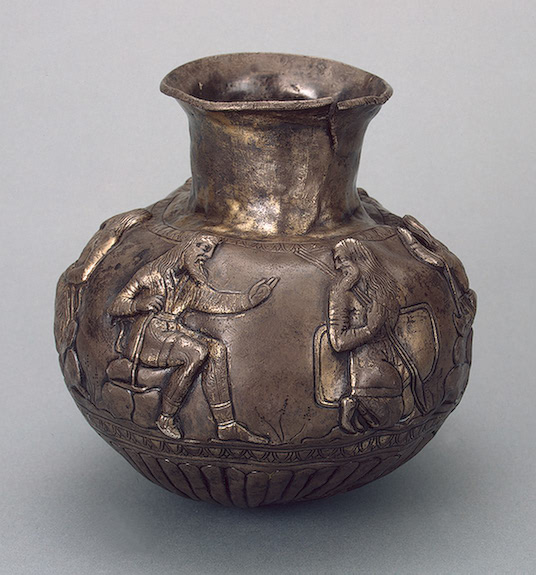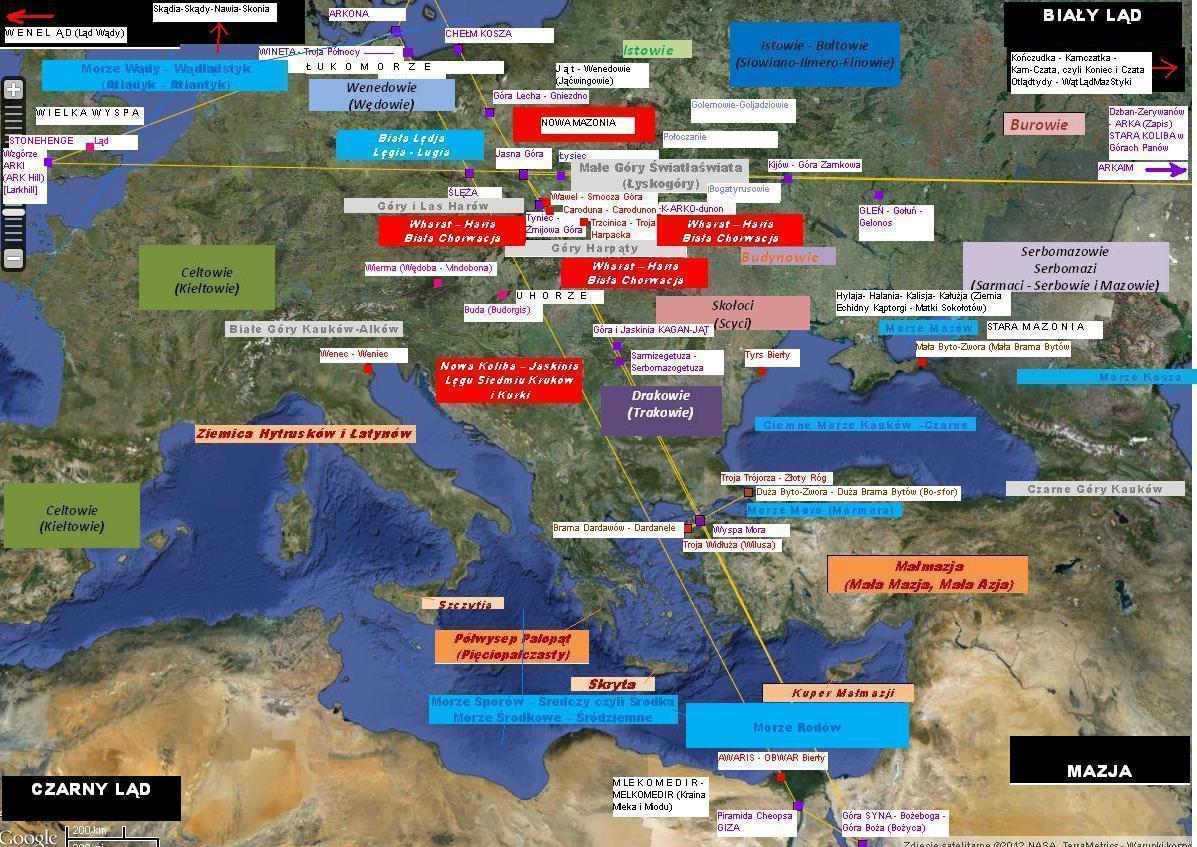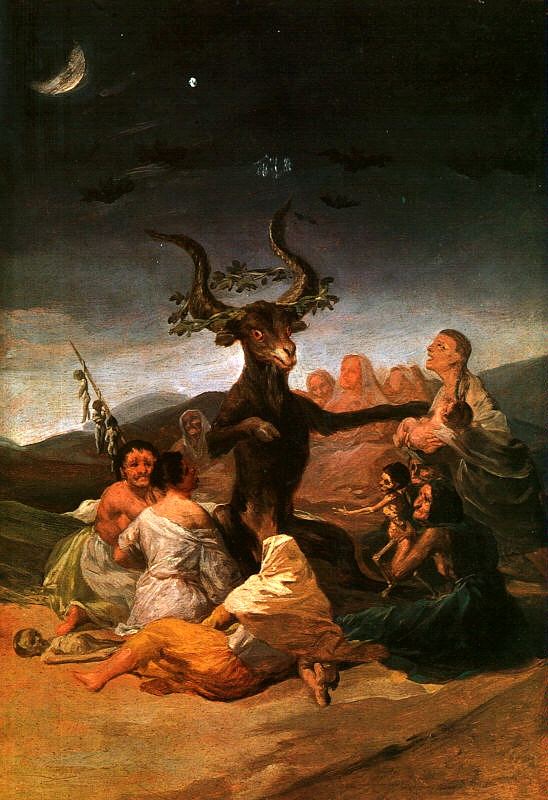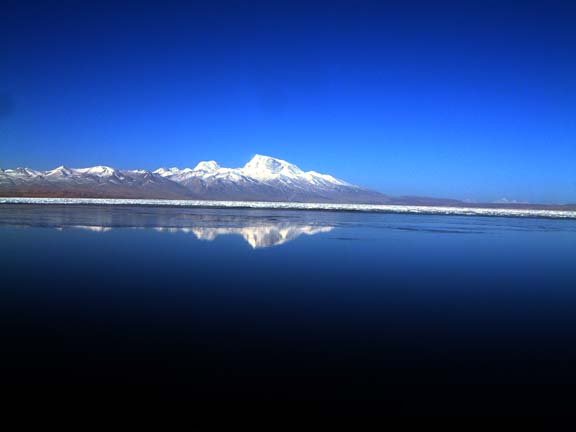© by Czesław Białczyński
© translated by Katarzyna Goliszek
by bialczynski on 16 Maj 2012
Targi-Taos and Kołak (Targitaos and Kolaksais on the Goblet <Czara> coming from excavations) – truly Targitaos is a masculine equivalent of Kąp-Torga-Taja. What does it certify? The word torga – torba – is not a masculine attribute – the masculine are: the pole, club, baton, sword, pike. Taos – means god. Thus Kaptorgataja – the She Bird-Snake (Ptakowężyca) from the times when Women – Mazonkas (Mazonki) ruled – was the Carrier of the God’s Seed-Grain, the Carrier of God’s Mystery (Mysery – Taja), the Mystery – the Gods’ Message and mother of three sons – the creators of Scolotia – Kołak, Karpok and Lipok.
 Kaptorga from a graveyard in Opole Groszowice (according to E.Holc, 2005, page 106)
Kaptorga from a graveyard in Opole Groszowice (according to E.Holc, 2005, page 106)
Later on, tiny copies similar to the Goblet (Czara) started to be made and they were hung on little chains around the neck. Inside of them were herbs, bird feathers and powdered incense sacrificed to proper gods. These little boxes made of thin metal, richly decorated with relievo were called kaptorgas (kaptorgi). As it is known, kap means wood sacrificed to god – his pal-wan – an image carved in proper wood – of the wood cut from the holy grove devoted to that god, torga-torba (bag) – koszyk (basket), and taja (mystery) – so herbs, powders, precious stones, materials which prove the complete sacrifice to the proper god – you need to know the Taja to make a kaptorga correctly so that it is effective.
Sistanie (people of Sistan) i.e. Slavo-Indo-Scolotians (Aryans or Pre-Slavs) are the rightful owners of the divine fascinating tools, the attributes of the power of gods which were thrown down from Heaven onto the Earth more than 30,000 years ago.
 Pagan Kaptorga from Biskupin – the settlement comes from about 1300 BC, and the kaptorga from the10th century
Pagan Kaptorga from Biskupin – the settlement comes from about 1300 BC, and the kaptorga from the10th century
(photo: http://www.lucivo.pl)
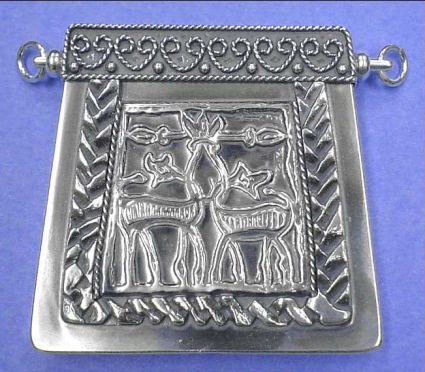 Kaptorga – probably Christian from the 11th century from Chełm – two deers at the Tree of the World are clearly seen here. Do this one and the previous one differ with something important from each other? It must be said that there has been the absolute Slavic continuity in these creations – but archaeologists find it hard to acknowledge this because dragons and deer are two different religious worlds to them. It is interesting where their defiance comes from – does it come from the German money for the research?
Kaptorga – probably Christian from the 11th century from Chełm – two deers at the Tree of the World are clearly seen here. Do this one and the previous one differ with something important from each other? It must be said that there has been the absolute Slavic continuity in these creations – but archaeologists find it hard to acknowledge this because dragons and deer are two different religious worlds to them. It is interesting where their defiance comes from – does it come from the German money for the research?
 Another early medieval kaptorga from Prabuty in Warmia – the 11th century. Christians adapted kaptorgas for their needs in the early Middle Ages, after 966 AD – it was, however, a brief phenomenon as the kaptorgas did not protect them effectively, which would have been difficult otherwise since they tried to protect themselves by keeping holy relics from Judea and Rome inside of them.
Another early medieval kaptorga from Prabuty in Warmia – the 11th century. Christians adapted kaptorgas for their needs in the early Middle Ages, after 966 AD – it was, however, a brief phenomenon as the kaptorgas did not protect them effectively, which would have been difficult otherwise since they tried to protect themselves by keeping holy relics from Judea and Rome inside of them.
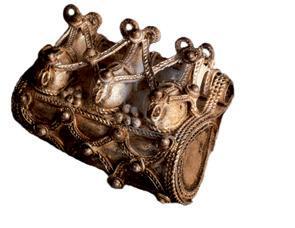 Kaptorga from Old Korzymia (Stara Korzymia) – Slavic masterpiece of gold smithery – early Middle Ages. I recommend an article about this
Kaptorga from Old Korzymia (Stara Korzymia) – Slavic masterpiece of gold smithery – early Middle Ages. I recommend an article about this
topic: http://www2.almamater.uj.edu.pl/99/46.pdf
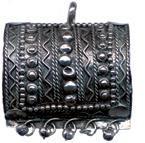 Contemporary kaptorga from India – the proof of the belief and cultural community between India and the Slavs as well as its continuity of the Faith of Nature and the example of the proper use of kaptorga and the proof of its pagan use.
Contemporary kaptorga from India – the proof of the belief and cultural community between India and the Slavs as well as its continuity of the Faith of Nature and the example of the proper use of kaptorga and the proof of its pagan use.
It was to them – OUR ANCESTORS (Y-DNA R1a1a1) that gods addressed the message directing it to the place where Scolotians (Pre-Slavs – Scyths-Indo-Slavs) dwelt. Finding this place on Earth we can try to identify today the starting point of Zerywani, i.e the Old Koliba, not waiting till genetics does it.
 Asia Minor and the Land (Black and White – the essential area of Sistan) [click magnify]
Asia Minor and the Land (Black and White – the essential area of Sistan) [click magnify]
In order to do so we must show first the area of Sistan and its characteristic places with placing its people and tribes. It is an extremely difficult task due to the vastness of the area which extended up to Four Lands: Asia Minor, White Land, Black Land and Wędy-Ląd. In this article we will show you maps which will illustrate the Book of Rue (after necessary supplements and graphic processing). They will enable you to have a better image of the location of the most significant places of Sistan and the distribution of tribes in its territory in different periods of history.
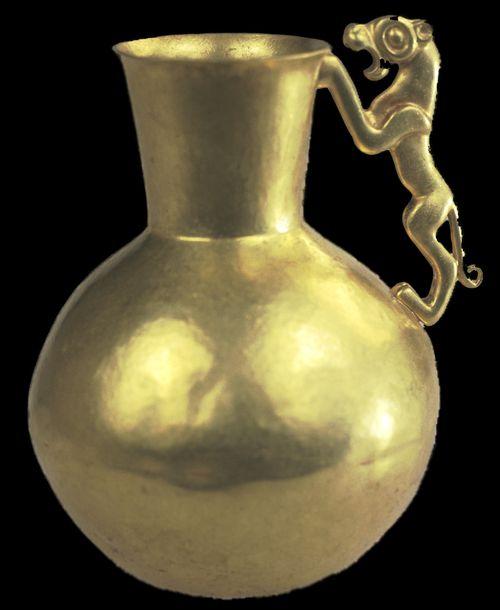
Why do we think that the Pitcher of Zerywani along with other objects being with it were addressed to Skołowie, i.e. Pre-Slavs? Not only because it was recorded so in chronicles basing on word of mouth. It is the Scyths-Scolotians that are the only people on Earth whose kings wore minatures of the Gold Goblet – the Pitcher of Zerywani at their gold belts. Thus we are the descendants of those who were anointed by gods also as receivers of the Gold Shackle-Ig (Kalia – Kolia – Koło-Koleso), Gold Oradło – Plowing Tool (Hoe – Hub – Thyrsus) and Gold Bow (Hatchet – Sickle-Riding Whip-Scythe – Baton) and, of course, the Gold Goblet (Pitcher – Cauldron-Ashtray – Kagan-Basket) as well.
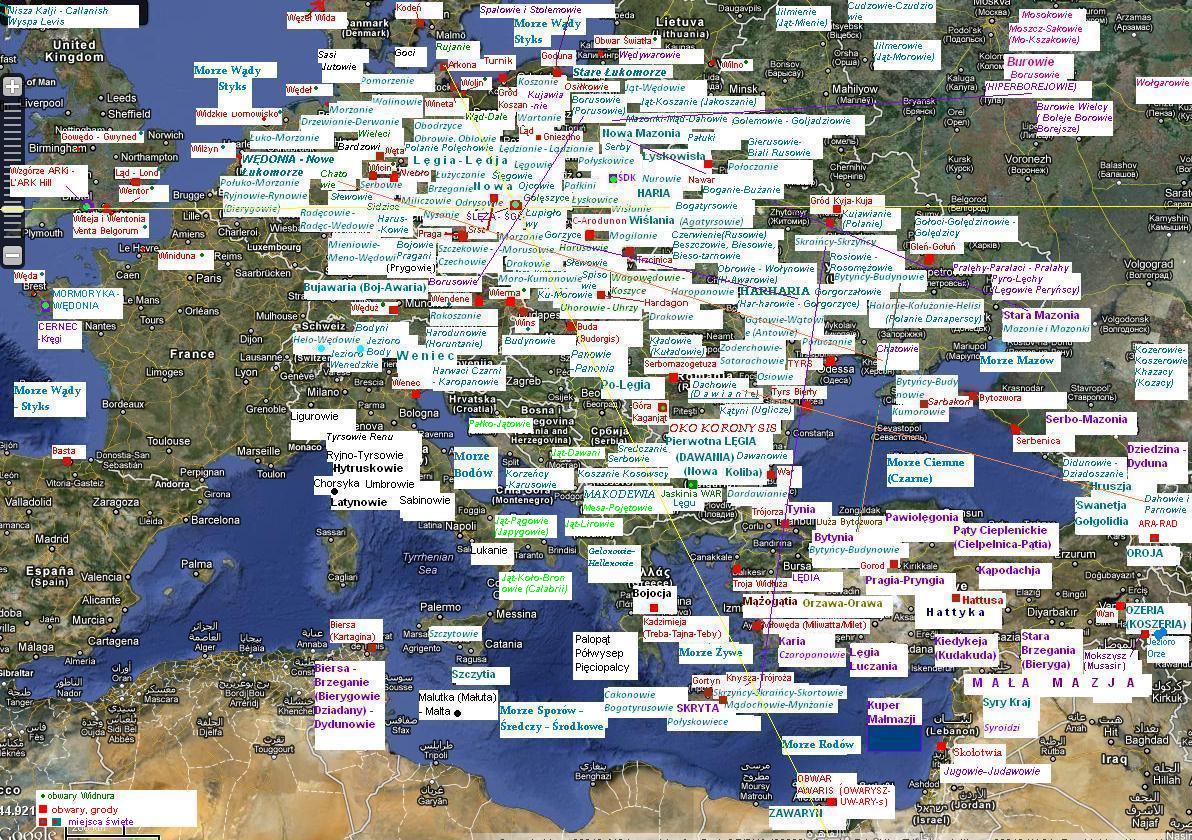 The White Land of the Sistans – New Koliba [click magnify]
The White Land of the Sistans – New Koliba [click magnify]
Other peoples living on Earth took the Goblet of the Sistans as the example of divinity and put it in their stories, in their Faith of Nature, in their books and records, in messages and also in rituals of coming to power – as the determinant of divinity and the tool symbolising a contact with Gods/Forces/Energies of the Universe (the Light of the World – Światło Świata). Only he who is able to carry the tools – so take them on with all the symbolic load they convey, it means taking on your own shoulders the load of knowledge (wieda) which they tell us as well as the burden of being a go-between of the People in the contact and dialogue with Gods – the burden of being a shaman, wizard, priest, an enlightened conveyor of Knowledge (of Wieda) – can be the Kagan-tiger or Kagan-side of the People.
Ark of the Covenant of the Jews or the Grail, or all the other royal and priestly cups filled during the coronation and the Mass with the wine which changes in god blood – red KRASZ – are the copies of the Aryan Goblet, the Goblet of the Great Skolotia, the Goblet of the Great Tartar, the Goblet of Jilmer-hiperboreja, the Goblet of Great Sarmatia, the Goblet of Wene-Dawa – the Great Dawania – the SORCERY OF SISTAN.
Can we find any clues that can show us the place on Earth where the individual episodes associated with these divine tools took place in the history of Zerywani ?
Yes, we can.
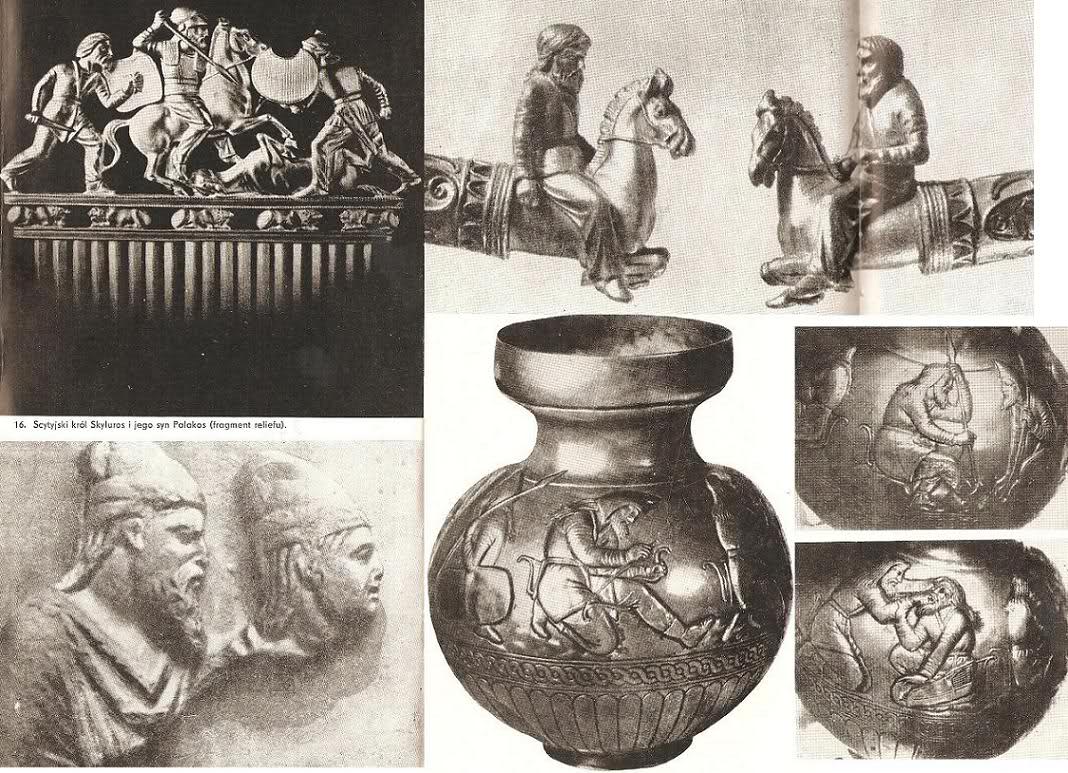 Skylur and Palak rulers of Bytozwora and Krym-Kumoria on the Goblet
Skylur and Palak rulers of Bytozwora and Krym-Kumoria on the Goblet
The history of the goblet – Dzieje (Cz)ARY) – on the basis of Mystery 23 annotation 67:
Goblet-Hara-Gara and Goblet-Hark is the same as Ara and Ark – the two Holy Pitchers of Zerywani. The story about breaking of the first Pitcher of Zerywani – Czara (Ara) and losing it (the same as about breaking the second Pitcher of kagan Mrukrza – Black Goblet (Kara Czara) was written in the Book of Aurochs – Mystery 17 as well as earlier in the apocrypha of Celestial Beings and demons, i.e. old Slavic little godesses and little gods (Stworze i zdusze, czyli starosłowiańskie boginki, bogunowie i demony). In place of the old pitcher, góryci of the holy castle of the Cave of Ark (Jama Ark: Czarkajama) made a much smaller third copy of the pitcher called Czarka-Harka-Garka.
The pitcher served not only as a storage of holy mead, but it was also used for heating the holy drink. It was resistant to fire and heat (żar-gar) was being constantly put under it so as to make the holy drink. Contrary to the old Goblet (Czara), the Little Goblet (Czarka) did not have patterns of the World left personally by Swąt. The patterns it had were made by the Arkajam people – góryci from memory.
(góryci – people who have knowledge, who are prophets – the same as guru which means: man ”knowing what is on top <na górze>, knowing the things and handling them – hara-góra (mountain / mount) – guru, Hare Kryszna – Krasna Góra , Góra Krasy which means Beautiful Mountain as well as Red / Ruddy Mountain).
A dish is called „Goblet (Czara)” because it is used for storing and making the magical drink of mead which was collected in it, „Hara” – because the old pitcher-Goblet (Czara) was as big as a mountain – Hara (Góra – Mountain) (Kara Mountain – Black Mountain). The material was transported to the top of the pitcher on ramps and carried by climbing stairs and ladders. „Gara” derives from the word żar (heat) – gar (a huge pot) and ogar – grzaniec (mulled) and gar – soot at the bottom of the underside as well as gor – gorzała (booze), and gor – fire (gorzeń, gorąco – hot). The first Pitcher of Zerywani – the Holy Goblet, the symbol of Hearth in Old Koliba during the reign of a king – kagan Pirst (a gift from the gods). The second Pitcher of Zerywani – the Black Goblet (Kara Czara) – rebuilt by kagan Mrukrza Milicz and two following kings of the family of Bardzowie (Bard-Barz and Bogdar) in Stara Koliba, lost and broken after the marching of Śmierorz and killing Zerywani and expelling their survivors in the form of bitches and boars beyond the Vipers Shafts – to New Koliba – Lęg-War in Lęgia (Cave War, Lęgiel). The third Pitcher of Nowokolibańczcy (people of New Koliba) – Czarka-Arka (Little Goblet-Ark) was reconstructed in the Cave of Ark (Jama Arki – Arkajama) in the Old Times of New Koliba, and its copies were given to each of the Peoples (to Nine Peoples born from Ravens (Kruki), Kurka (Hen – the symbol of light, fire, the sky and the sun) and Kąptorga: Nurowie, Budynowie (Budinoi), Burowie-Czarnosiermiężni, Serbomazowie, Lęgowie, Wedowie, Istowie, Dawanowie and Skołoci). Some legends and some stories tell that the first kings of the Nine Nations in New Koliba received one page of the Gołub Book – containing deepest mysteries of Wieda. Others believe that the mysteries were engraved on the walls of the Little Goblet – and previously the Goblet – the Pitcher of Zerywani and were passed on to Peoples together with copies (the Fourth Pitchers) of the Third Pitcher, already of New Koliba – The Little Goblet of Czarkajama (Czarka of Czarkajama). d
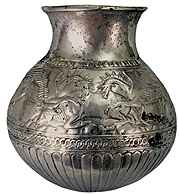 a The Book of Aurochs edition of 2000, by Baran & Suszczyński, Kraków – Taja 17 ( Mystery 17): pages: 296-297, 303-308, The Book of Aurochs full edition from 2008, the Turlej Foundation , Kraków, Taja 17: pages: 432 – 438, 444 – 445, Celestial Beings and Demons Stworze i zdusze of the 1993 edition, Land of the Moon, Kraków – pages: 9-16.
a The Book of Aurochs edition of 2000, by Baran & Suszczyński, Kraków – Taja 17 ( Mystery 17): pages: 296-297, 303-308, The Book of Aurochs full edition from 2008, the Turlej Foundation , Kraków, Taja 17: pages: 432 – 438, 444 – 445, Celestial Beings and Demons Stworze i zdusze of the 1993 edition, Land of the Moon, Kraków – pages: 9-16.
b It was the rulers of the Scyths who wore the symbolic gold goblet at the gold belt. Belts with the gold goblet were also found in the tombs of the kings of the Scyths.
c The book of Aurochs published in 2000, Baran & Suszyński, Kraków – Taja 17 (Mystery 17): pages: 303-304, The Book of Aurochs fully edited in 2008, the Turlej Foundation , Kraków, Taja 17: pages: 444 – 445.
d A legend about divine royal gold tools of Scyths that fell down from the sky in the form of a lister, shackle, hatchet and goblet (czara) is passed on by Herodotus. That divine Goblet-Ara (Czara-Ara) is just Zerywani’s Pitcher. Its copy is the Little Goblet – Divine Little Goblet (Boska Czarka) – Divine Ark (Boska Arka). The Judah call it Ark of the Covenant with God in the Bible. They could have taken the legend from the Scolotians-Scyths who were inviding them repeatedly. The Jewish-Judah used the Aszkuza for Scolotians and claimed that they came from the son of Japheth Askeza. Aszkez is a distorted record of the name Kagantyrs Osiek or Orzekosz – Ore Kosz – Koszerys-Kozyrys, the one who led Koszatyrsi to the East of Iran and India. Interestingly, it was the Jews that kept the memory in their historical messages that the Scyths-Scolotians are none other than the people called Slavs later, so of the Scolotian-Slavic genetic and cultural continuity. They called their kin Ashkenazic Jews who inhabited among the Slavs in Eastern Europe and on the Black Sea. [see: Wikipedia, password Scyths ( or Scythians)].
 The Goblet of Kings – „Vol-„ “Cz-”Ara from “Cz”ARaRAt Mountain (CZ-ara Boga RA – the goblet: CZ-ara of God RA), CZ_ARA_RAD. RA like in WIARA (Faith), RA-three kinds of fire in one war-ysk-żar [war-łysk-gor]! – also three letters, three letters like three stars of Orion’s Belt-K-OSI-ARZ-Weles, like War-Łysko-Żary, We-leso-żary, like RADA – Przekaz (Message) and Przykaz (Commandment),
The Goblet of Kings – „Vol-„ “Cz-”Ara from “Cz”ARaRAt Mountain (CZ-ara Boga RA – the goblet: CZ-ara of God RA), CZ_ARA_RAD. RA like in WIARA (Faith), RA-three kinds of fire in one war-ysk-żar [war-łysk-gor]! – also three letters, three letters like three stars of Orion’s Belt-K-OSI-ARZ-Weles, like War-Łysko-Żary, We-leso-żary, like RADA – Przekaz (Message) and Przykaz (Commandment),
 Cz-ARA (goblet) sited in “ARKA”-cave, (ARKA-JAMA), then transported in a copy on Lake ARAL, lost in the darkness of historical events in fights with gods for MYSTERY (TAJA), somewhere in Łukomorze, i.e. in AR(s)Kona,
Cz-ARA (goblet) sited in “ARKA”-cave, (ARKA-JAMA), then transported in a copy on Lake ARAL, lost in the darkness of historical events in fights with gods for MYSTERY (TAJA), somewhere in Łukomorze, i.e. in AR(s)Kona,
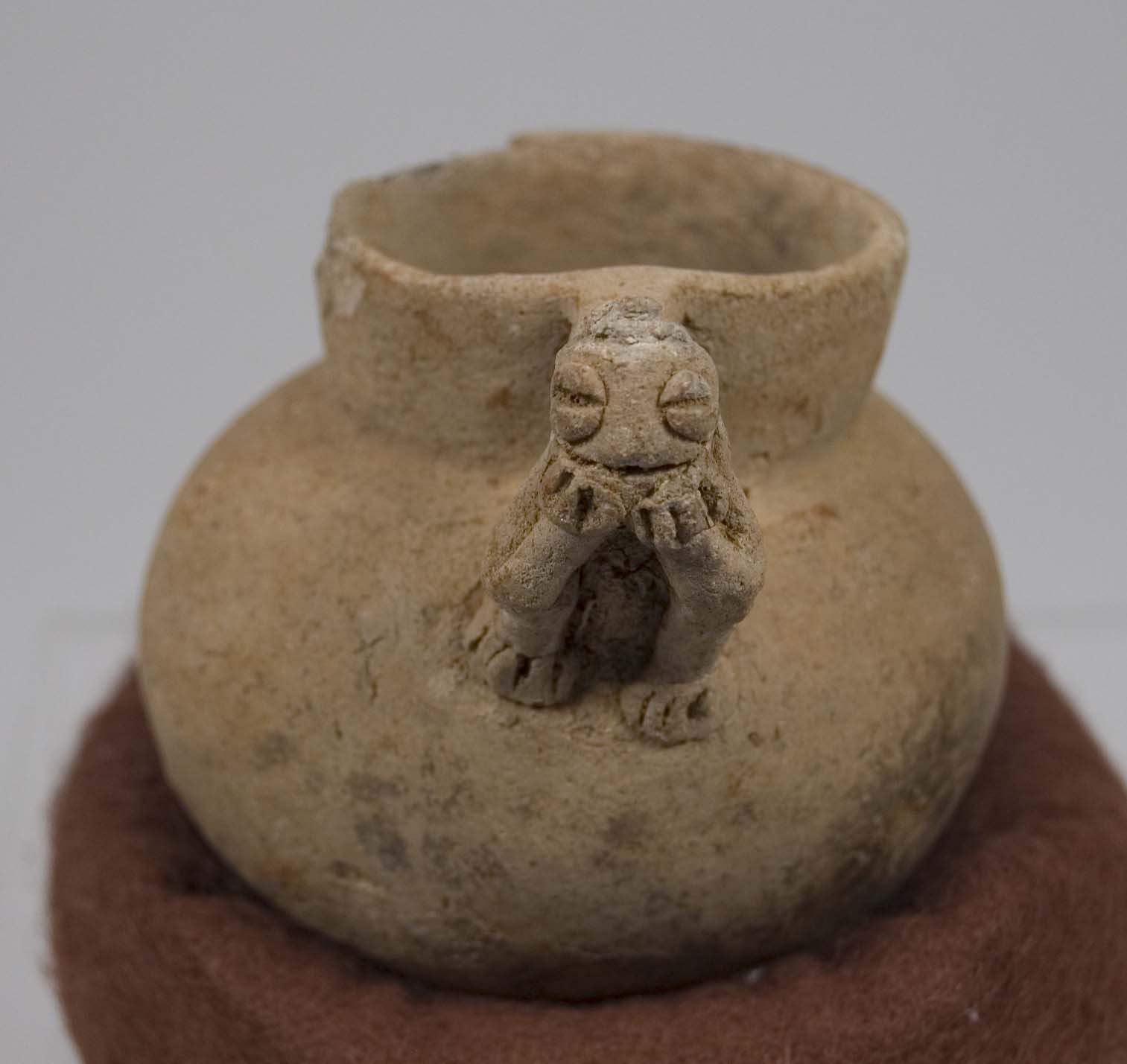 Cz-ARA (goblet) reconstructed and sited as an OVAL (OWAL) (image of Kłódź) on “L”ARK(hill),
Cz-ARA (goblet) reconstructed and sited as an OVAL (OWAL) (image of Kłódź) on “L”ARK(hill),
 CZ-ARA (goblet) – sunken twice in “CZA”RO-duna or Czara-chowo (H-ARA-chow),
CZ-ARA (goblet) – sunken twice in “CZA”RO-duna or Czara-chowo (H-ARA-chow),
 Cza-ARA – later on taught in the holy grove by word of mouth – i.e. as the third goblet – Czara ARA-Nyjaka (Czara Lost),
Cza-ARA – later on taught in the holy grove by word of mouth – i.e. as the third goblet – Czara ARA-Nyjaka (Czara Lost),
 “Cz”ARKA (little goblet), which was worn by Scolotian kings at their waist – by C-ARowie (kaganowie) and no other. They wore it as “CZ”ARA – The Great Pitcher – one of the divine tools and stigmata of Heavenly power given by the gods of SISTAN – to nobody else but its kings. The third CZ-ARA-Njaka survived as Weda.
“Cz”ARKA (little goblet), which was worn by Scolotian kings at their waist – by C-ARowie (kaganowie) and no other. They wore it as “CZ”ARA – The Great Pitcher – one of the divine tools and stigmata of Heavenly power given by the gods of SISTAN – to nobody else but its kings. The third CZ-ARA-Njaka survived as Weda.
 There is one more link in this continuity of the three Goblets and it was there that the third copy of the Goblet (Cz-ARA-OWA-l) was made and it is associated with Giza and the Nile Blue River Mlekomedir Ow-ARysz (UW-ARIs, Uvaris-Awaris) – the last place of intertwining (intertwining – uwicie: UWicie) Ara by Rysowie. It is those Rysowie – a group of conveyors of Faith, after all, who are known in India-Windia as riśi-riszi. It is in India that our Rig-Weda and Od-Harwat-Weda has survived and it is there that it has been creatively developed throughout the centuries.
There is one more link in this continuity of the three Goblets and it was there that the third copy of the Goblet (Cz-ARA-OWA-l) was made and it is associated with Giza and the Nile Blue River Mlekomedir Ow-ARysz (UW-ARIs, Uvaris-Awaris) – the last place of intertwining (intertwining – uwicie: UWicie) Ara by Rysowie. It is those Rysowie – a group of conveyors of Faith, after all, who are known in India-Windia as riśi-riszi. It is in India that our Rig-Weda and Od-Harwat-Weda has survived and it is there that it has been creatively developed throughout the centuries.
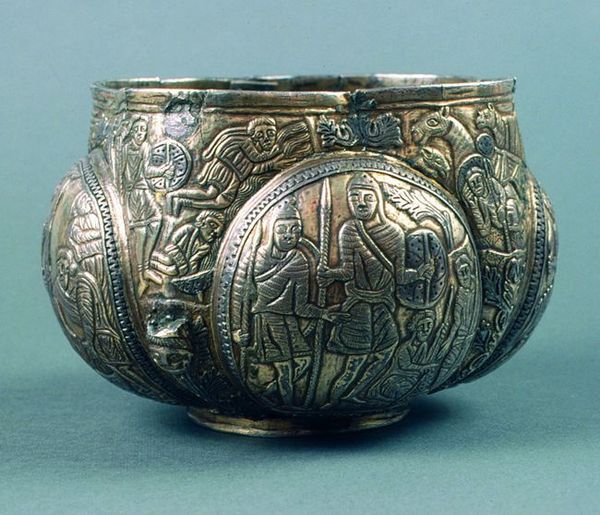 Today, we come back here to the Rig-Veda, Seeds and Roots of the Vedas, the Veda (Weda) in the Mother Earth zaRYTa-wyRYTA-zakRYTA (carved, covered) – to the Wieda of the Oder and the Vistula and the Dnepr – the Oldest Wieda – the Slavo-Ist-Scolotian Wieda.
Today, we come back here to the Rig-Veda, Seeds and Roots of the Vedas, the Veda (Weda) in the Mother Earth zaRYTa-wyRYTA-zakRYTA (carved, covered) – to the Wieda of the Oder and the Vistula and the Dnepr – the Oldest Wieda – the Slavo-Ist-Scolotian Wieda.
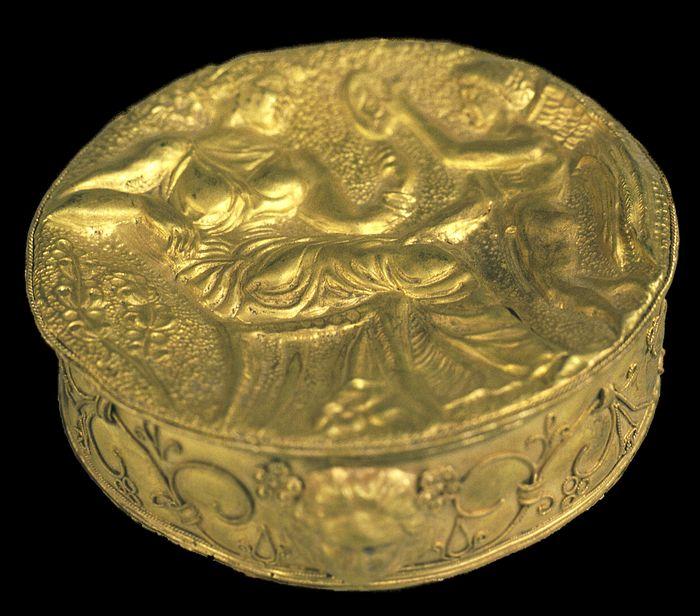 However, the most important first goblet (CZARA)-Pitcher of Zerywani was given to them in Stara Koliba – at the foot of Kalja Mountain – the Mountain of the former goddess of knowledge – Plątwa and the Mountain of the new Goddess of Knowledge – Gogołada – The Mountain of Black and White Goddess, the Mountain of Brightness and Darkness, the Mountain of Light and Dark, the mountain at the foot of which lies lake MAN – S-AR – OW-AR – It is here that ARA was intertwined (UWITA), here it arose from heat (WAR), here it was given (DANA) and here it was captured (poj-MANA) (called and taken as theirs – for Mana – miano (name) and something that we have, what is ours).
However, the most important first goblet (CZARA)-Pitcher of Zerywani was given to them in Stara Koliba – at the foot of Kalja Mountain – the Mountain of the former goddess of knowledge – Plątwa and the Mountain of the new Goddess of Knowledge – Gogołada – The Mountain of Black and White Goddess, the Mountain of Brightness and Darkness, the Mountain of Light and Dark, the mountain at the foot of which lies lake MAN – S-AR – OW-AR – It is here that ARA was intertwined (UWITA), here it arose from heat (WAR), here it was given (DANA) and here it was captured (poj-MANA) (called and taken as theirs – for Mana – miano (name) and something that we have, what is ours).
Cz-ARA (goblet) and Wij-ARA (faith)
The record is significant but memory can not be reduced to the mark. Memory and tradition mean spoken language. So I emphasise that at this point you should forget the record, the way it was written in – our attention should not be focused on spelling of the words – they should be considered in phonetic terms. Of course Rus has kept this partly in the saved alphabet, and we do not have it in the Latin alphabet. We rather have little of it – as an echo of Slavic-Etruscan runes. The Polish word WIARA (faith) has preserved a significant component which has been lost in Russian and Ukrainian and in other languages of Slavs – phoneme ”ja” /pronounced: ya/ – the ”Ja” giving faith of Nature uniqueness, individuality, personality. „Ja” (”I”) – which contradicts community and mediation of professional priests.
Here are meanings contained in the word WIARA (faith):
Wijara (faith) = Wieda (knowledge)
+
Wijara = Ja (I)
+
Wijara = Ra
+
Wija Ra = Future, intertwining of Ra
+
Jar – Or – Ar = grain (ziarno) – freshness – strength (siła) – power (moc) – beginning
+ AR = Aria
where ra – really signifies the synthesis of the Three Fires (in our language it is Blue Fire (Ogień Niebieski) – Sky/Heaven (Niebo) – Light (Światło) – Dażbóg + Chemical Fire (Ogień Chemiczny) – let’s call it ”genuine fire” – Flame (Płomień) – Swaróg + Plasmatic Fire (Ogień Plazmatyczny) – Perun.
It is Heaven Trinity to which the 4th Element comes – creating the Upper Four of the Elements – Wind – Strzybóg (Stribog) and all his Holy place of Winds and Air.
Eight Elements make up 3 Trinities and at the same time two Fours.
We have
Heavenly Trinity – Fiery – representing Heaven and Prawia and Wela,
Bright Trinity – Lively or Alive (Lives) – Wind + Forest (tree for the Chinese) + Spore (egg, mud – Marsh for the Chinese) = Jawia
as well as
Earthly Trinity (Underground) which means Spore + Water + Earth = Nawias.
The Four of the Bottom Elements, Heavy, Dark make up: Forest + Spore + Water + Earth.
Ja (I) – means ja (I), i.e. Only I know, I know only what I know, faith is only mine, nobody else’s. Faith is not shared with others in the meaning of ”I am only with these and those because I profess this and that”. Community arises over Faith as the sum of beliefs. Faith is completely individual. It can not be different – only this gives it eternal life – Otherwise it becomes a doctrine – RELIGION.
 Three Goblets (Czary), Three Thyrsuses, Three Crowns, Three Kaljas of Earth
Three Goblets (Czary), Three Thyrsuses, Three Crowns, Three Kaljas of Earth
Other Slavic Goblets:
Goblet (Czara)
(Russian: Чара) – a river in Russia, in the Irkutsk area, Chita and Yakutia district, the left (and longest) tributary of the Olyokma River. Length of 851 km; the basin surface is 87 600 km ²; the average annual flow at the river mouth is of 900 m³ / s.
Springs in the Stanovoy Mountains, in the range of Kodar; in the upper course a number of thresholds; in the middle course it flows through the valley separating the Patomskoye Upland from the Olyokma-Czarski Plateau; in the lower course it flows toward north-east direction parallel to the Lena River.
It freezes from October to May; snow-rain power.
The main tributaries: the Tokko (right) and the Zuya (left) Rivers.
(in Russian)
Ща́ра
(белор. Шчара, польск. Szczara) — река в Белоруссии, левый приток Нёмана. Длина — 325 км, площадь бассейна — 9990 км² [1]. Исток в пределах Белорусской гряды. Преобладает снеговое питание; с конца февраля по май половодье. Средний расход воды — 31 м³/сек. Ледостав обычно с января по март. Через озеро Выгонощанское соединена с рекой Ясельда (бассейн Днепра) Огинским каналом.
Нижнее и среднее течение шлюзовано, сооружено водохранилище Миничи.
Гидроним балтского происхождения, означает «узкая»
На Щаре расположены города Слоним и Ляховичи.
Чара
(польск. Czara – Goblet) — польский дворянский герб.
Описание
В голубом поле с серебряною окраиною, змея, обвившаяся около золотой чаши и пьющая из неё; над змеёй серебряная шестиконечная звезда.
В навершии шлема три страусовые пера. Герб Чара Гинча внесен в Часть 1 Гербовника дворянских родов Царства Польского, стр. 207.
Герб используют
Выше изображенный герб Всемилостивейше пожалован вместе с потомственным дворянством Асессору фармации Люблинскому Аптекарю Карлу Фридрихову сыну Гинчу Высочайшею Грамотою Государя Императора и Царя НИКОЛАЯ I, во 2 (14) день Октября 1839 года данною, за непоколебимую верность Престолу.
Литература
* Часть 1 Гербовника дворянских родов Царства Польского, стр. 207
- Tadeusz Gajl. Polish Armorial Middle Ages to 20th Century. — Gdańsk, 2007.
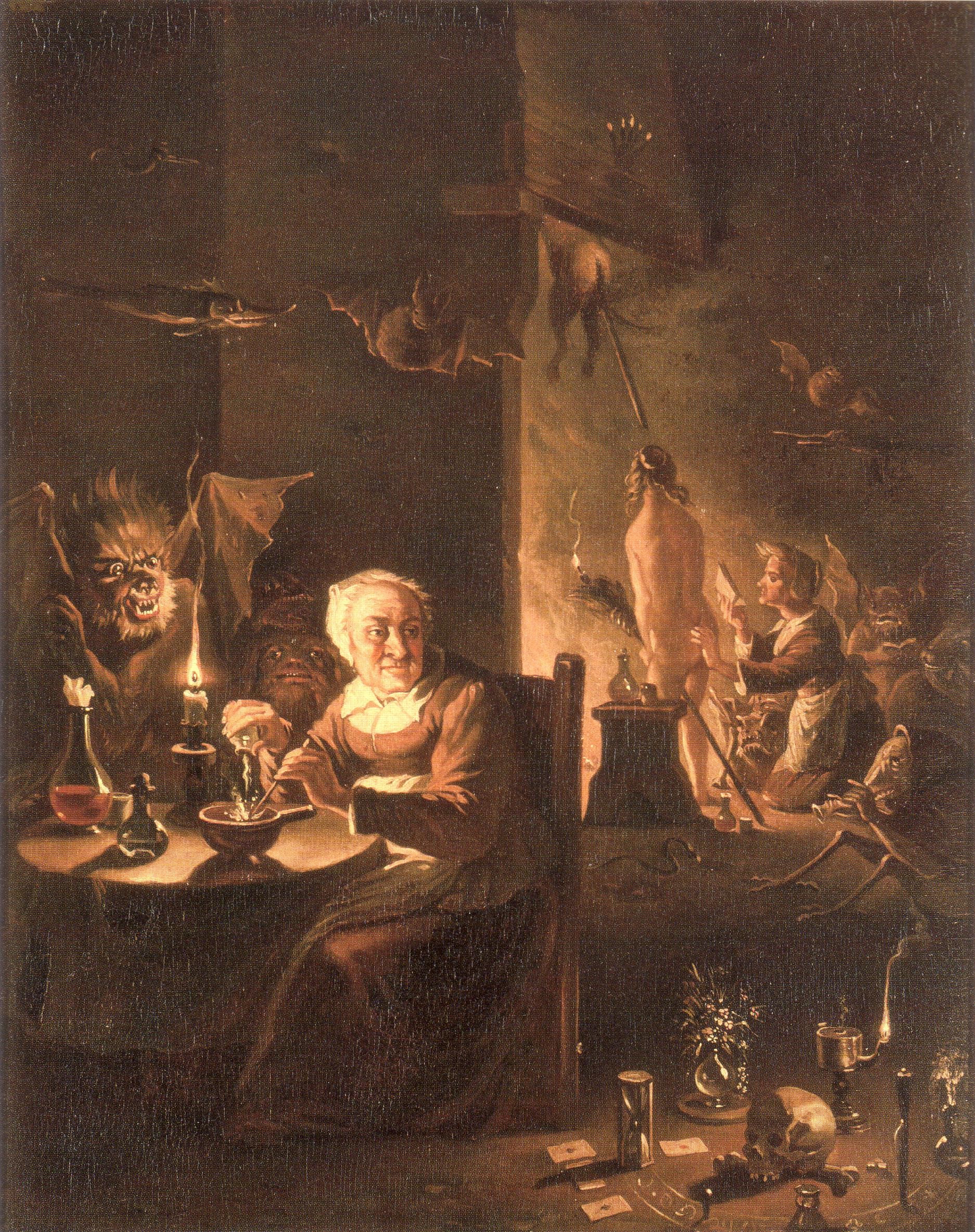 Goblet and sorcery (Czara i czary)
Goblet and sorcery (Czara i czary)
Sorcery (Czary), namely Magic (Magia – Mogtja) – Might (Moc), shamanism
Magic, sorcery, witchcraft, wizardry – general beliefs and practices based on the belief of the existence of the supernatural forces, which can be controlled with appropriate spells and actions[1].
Magician, socrerer, shaman – a person concerned with magic. He makes various gestures, spells, utters incantations and performs other rituals designed to give him power over the supernatural forces which, according to his beliefs will give him the power to change reality. Also, a person holding a religious function involving formalised and institutionalised ecstatic bond with superhuman beings, spirits of ancestors, demons or gods. Some magicians reject traditional rituals for the techniques inspired by psychology, or NLP (Neuro-Linguistic Programming). Lack of the possibility to state the bonds between the applied method and the possible effect, however, makes the effectiveness of the magical activities and existence of supernatural forces postulated by it remain in the realm of faith.
Etymology
The word ‚magic’ comes originally from Magicians (in the Old Persian language maguš, in Greek μάγος), of astrologers-priests of Zoroastrianism of the Medes people. In the Hellenistic period, the Greek word μάγος (magos) could have been used as an adjective, but the adjective μαγικός (magikos, and in Latin: magicus) is also proven to have been used in the first century (Plutarch), typically common in the feminine gender in the wording of μαγική τέχνη (magike techne, in Latn: ars magica) „magical art”. The word magic came into use in English at the end of the fourteenth century originating from the Old French word magique.
(in Russian)
Слово „магия» пришло в русский язык через латинский и греческий языки. Оно восходит к шумерскому или туранскому слову Imga (emga) („мудрый”), обозначавшего прото-халдейских жрецов. Впоследствии слово magic стало стандартным термином для зороастрийских (персидских) жрецов, от которых восточные оккультные искусства стали известны грекам, у которых слово magos (и родственные magikos, Mageia) стало названием человека, обладающего тайными знаниями и силой подобно персидским magus.[3]
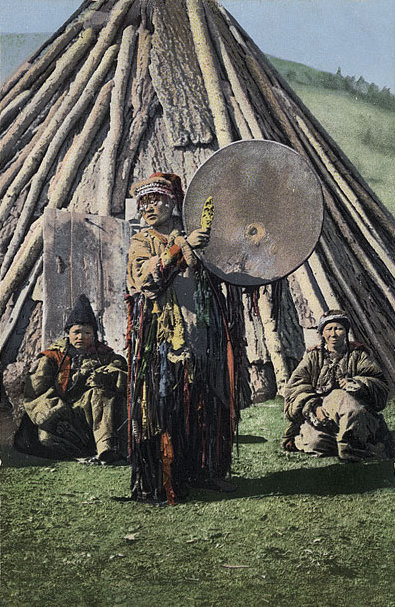 A female shaman with a drum – the Załtaje Mountains (Góry Załtaje) – the Mountains of Golden Mysteries
A female shaman with a drum – the Załtaje Mountains (Góry Załtaje) – the Mountains of Golden Mysteries
White versus black magic
There are many discrepancies in comprehending the difference between black and white magic. The majority of contemporary magicians, particularly those that belong to the western cultural group, do not attribute colours to any kind of magic stating that magic is merely a tool and the way of using it depends solely on the magician’s will (it is the magician that can be ”white” or ”black”, and not his tool). On the other hand, for example in Siberia there is a strict division between ”white” and ”black” shamans which is generally wholly determined by their origin. Strict as the division used to be in the part of medieval Europe, it was not so clear in other parts of the continent. Then, the aspect of magic understood as, for instance using demonic forces (which primarily were of an ambivalent character in the beliefs of, e.g. Greeks or Slavs) or divine ones also indicates a different aproach in the matter of its classification. Samely, we can not attribute the lack of distinguishing of the kinds of magic represented by some modern sorcerers barely to the character of contemporary western culture (ideas of individual freedom, liberalism, democracy).
In popular culture, white magic is usually the magic used for good purposes and by good ways, black magic, however, serves evil and is used for evil intentions and is usually related to performing it in dark ways. Similar attitude is applied in Wicca religion where magic is distinguished as black and white, according to the rule ”Do what you wish provided that Your actions do not hurt anybody” – actions which do not do harm to anybody are classified here as the white magic, but the black magic is the one that does harm. According to Alister Crowley, white magic means any actions of the magician that agree with his Will (which is not the same as doing what they wish, see: Thelema). All other magical activities that disagree with the Will were considered black magic by him. What is interesting, although Crowley was a proponent of (after all, his own) philosophy of Will and as a result he should not use any other magic than white. In his house in Scotland he had two separate rooms for the white and the black magic which he also used. As the distinctions made by the two notions were not always exact, a concept of grey magic signifying magic balancing on the border of these two occured.
Another czara (goblet) from India
1 – eka (jeden – one)
2 – do (dwa – two)
3 – tina (trzy – three)
4 – chara (cztery – four)
5 – pancha (pięć – five)
6 – chhah (sześć – six)
7 – sata (seidem – seven)
8 – ashta (osiem – eight)
9 – nau [devata – god’s digit nine (boska cyfra dziewięć)]
10 – dasa (dziesięć – ten)
Well, as it can be seen, the word <in Polish> czar (singular) and czary (plural) – <in English both in singular and plural – sorcery> and czara (goblet) and ARA – have something in common with ”czerta”, and additionally with czerta 4, cztery – chara because chara is pronounced ”czara”.
Also pay attention to 9 – nau or devata – NAW or DEW, what is interesting, corresponds with German (nojn). It is associated not only with Nawia but also with Nyja – Death, whereas chhah – szhah – with six (szesć) – szczęść (bless) and część (part) as well as cześć (honour). Is not asta ósta – Osta Łodź (Osta Boat) – Oś Nieskończona (Infinite Axis)? Has not our science noticed this philosophical bond and profundity? Or Faith? Definitely not as far as Faith of Nature is concerned.
Other Attributes of Gods
Czara (goblet) is the attribute of Greek Asklepios, the God of Herbs – the equivalent of our Gorzyca-Groźnica.
The bow is the attribute of Greek gods related to lust and love: of Apollo and Artemida as well as of Eros Aphrodite’s son – as it can be perceived the Greek counterparts of Kupała, Dziewanna who has both features of Aphrodite and Artemida as well as Krasatina – the feminine counterpart of Eros, came to like this weapon.

Scythian Necklace (Kolia) – pectoral – Necklace (Kolia) associated with goddess Kalija – Przepigoła – Plątwa – Holda – became the symbol of knowledge, a royal necklace worn by kings and queens as wiedunowie (people who have knowledge, prophets) tribe – the goddess of Kos-Przypadek (Kłótnica – the one that quarrels) lost to another meaningful goddess, the Ruler of Speech and Głagoł Scripture – Gogoł – Gogołada, Ład and Łada-Łagoda’s daughter. Łada-Łagoda (prettiness – Harmony of the World). This knowledge was partly transferred here from the Czara of the rulers of the World.
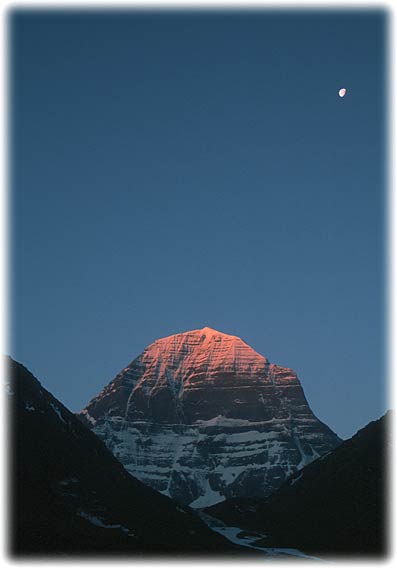
Man-Sar-Owar – Lake and Mount Kalja (of OW-AR S-ARA, Syroj Ara War – Many = Dany – danej i pojmanej (given and captured): Kaljia Mountain – known today as Mount Kailash (Kalash) in the Himalayas – the holy mountain of Hindus and Buddhists, one of the centers of the Faith of Nature of Tibet. Kalja is also Immaculate – Black and White – dedicated to black Kali being the incarnation of Plątwa-Kala (Przepigoła – Golja, Punished Plątwa).
Mansarowar – lake at the foot of Kalja – the Mountain of black goddess (Przepia-Golia and White – Gogo-Łada). Since the mountain has both Divisions, it means that it is the Mount of Swąt – some say so. Indeed, it can be reckoned the appropriate Mountain of the World – the Most Important Mountain because though not the highest, it is the Mountain of the Highest, the Mountain of Light (Knowledge and Englightenment).
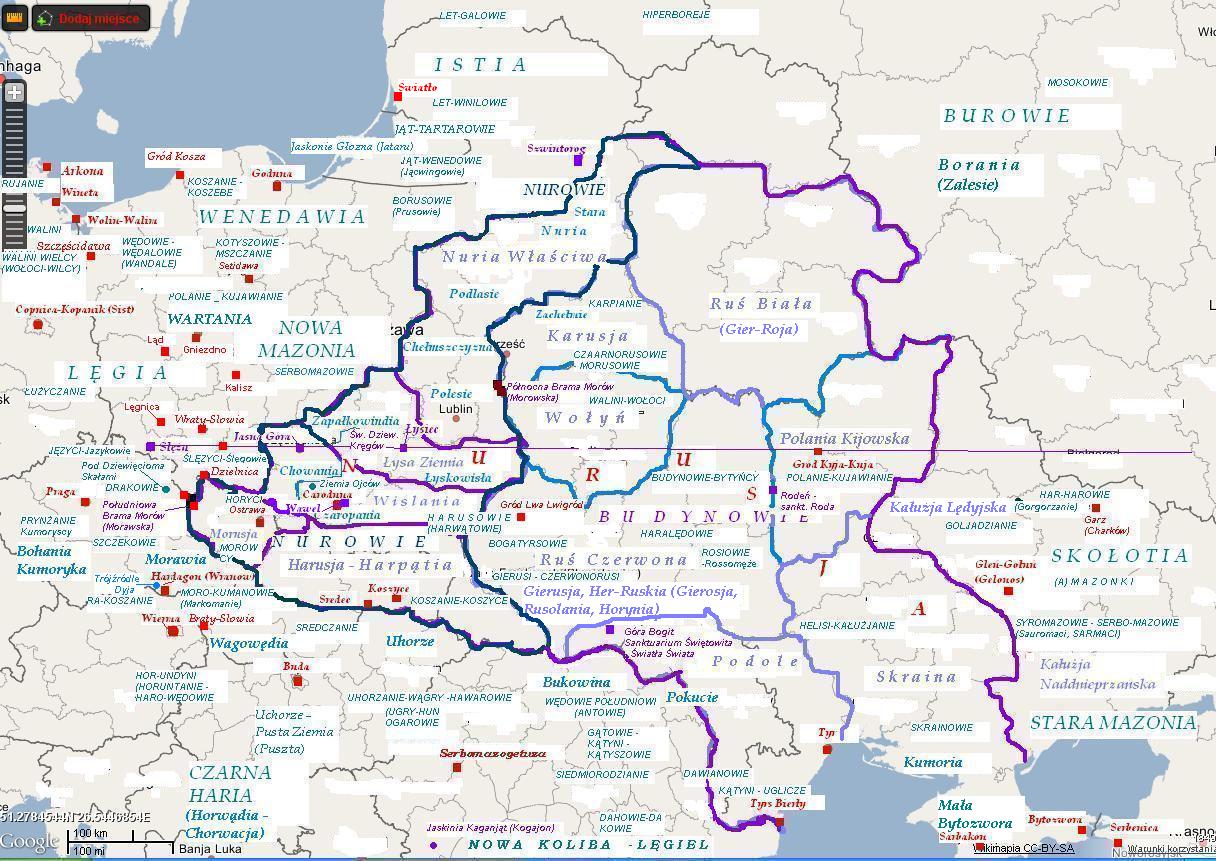
Nurusja and neighboring lands – location of Mount Bogit [click magnify]
I wondered for a long time if I should correct a few issues with Polish reading – otherwise perfect (but it would involve gathering the whole dispersed knowledge. It all is about Bogit Mountain where stood Svetovid of Zbrucz. Taking this into consideration, I came to the conclusion that I would have to write a lengthy polemic article).
I would like you to have a look at the article on T-ARA or here at the third part which we re-printed (it is on the black strip in the section of the Light Temples of the World (Świątynie Światła) – it is just in this UNIT, not in any other – about the Great Mother Venus – though it is a very significant reading and has important digits, I apologise to four (cztery) – because they are magical digits of belief, meaningful and not just some digits – 3 and 6 resulting from the two threes in the centre) – and let’s understand, all of us, that the most important in Orion and in the Orion’s Belt – given at Bogit and not only at Bogit, as well as in the Three posts of Bogit – is that the central post is AXIS MUNDI – Svetovit of Zbrucz – the Light of the World (Światło Świata) – the Highest of the Highest ones – and the two remaining stars are the great Division (Wielki Dział) – In-Yang – Czarnogłów and Białoboga – and the 8 fires means 8 Elements. As soon as we fully comprehend that, all will be arranged differently for us – apart from one – WE must believe that Gods exist and that they really act – also at this moment.
For those who tell „fables”, I mean sleepy small talk that the connection between Arkona and Giza is coincidental and that Ślęża is on this line because it results so from a statistical account – I insert one more time the maps from that article – the maps which should show or give something to think – There Are four rivers here the ERIDANUS (Milky) – the Nile (the central river the MedirMilk, i.e. Egypt – if any Polish person still knows the forgotten name of this country, and has not sunk in the depths of ignorance like Persians who had not been able to read their Avesta till Ignacy Pietraszewski – a Pole – translated it into Persian and which an average Polish person has not learned although Pietraszewski translated it 150 years ago) – and the third river is the Oder flowing statistiacally (and maybe just sedately?) next to the statistical (and maybe the final footing <Ostoja>) Ślęza, and the fourth river is of course the Zbrucz.

Mount Bogit and the Zbrucz River
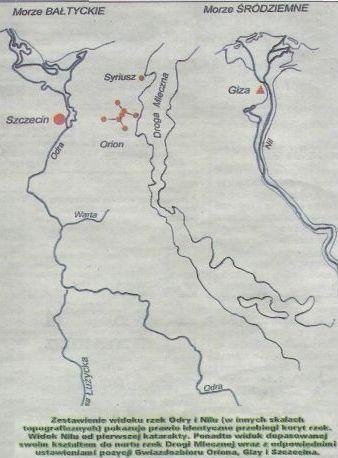
The Oder, the Eridanus and the Nile
There are lots of pieces of evidence telling that our people did not fall down from the sky in 966 along with Incensory in Gniezno, though an incensory is also a kind of CZARA.

